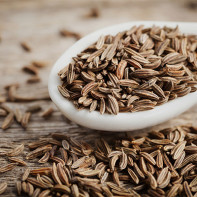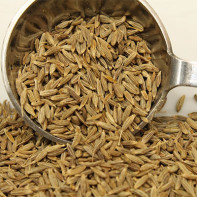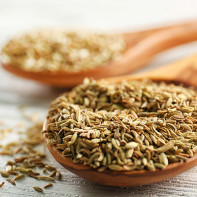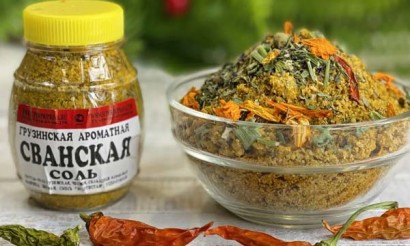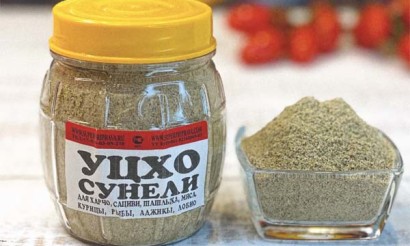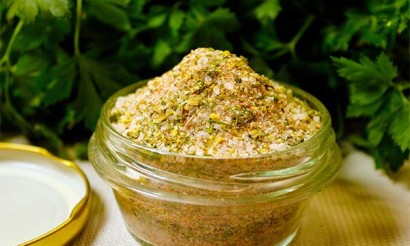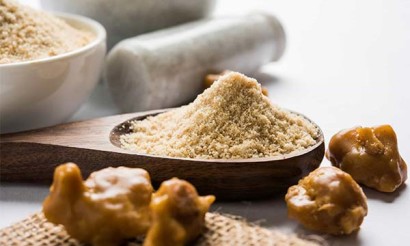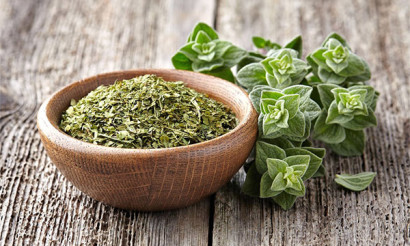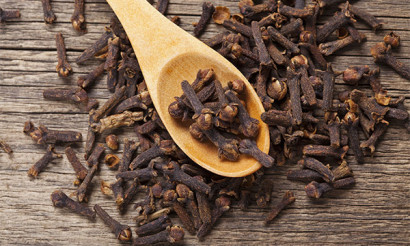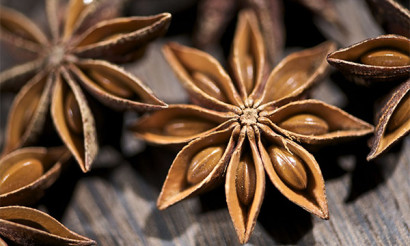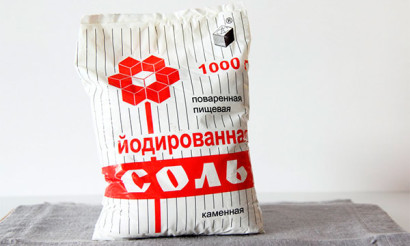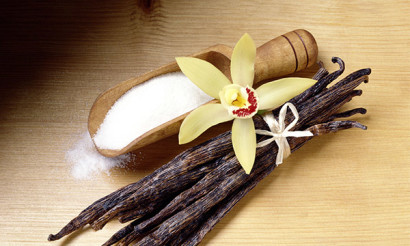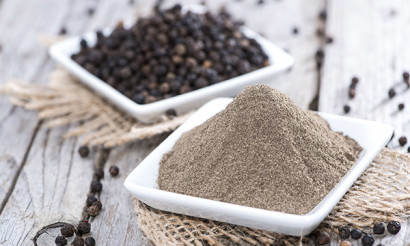Zira: where to add it and what is its health benefit for the body?
Lovers of dishes with the addition of foreign spices will certainly appreciate such an exotic spice as zira (Cumīnum cymīnum). This aromatic spice is originally from India. Now it is very popular throughout the world. It is often added to culinary masterpieces. In addition to the undeniable culinary benefits, cumin is also excellent with many infectious diseases, insomnia, kidney pathologies, gastrointestinal tract, accelerates regeneration and slows the growth of tumors.
- Zira: what is it, how does it look and where does it grow?
- History of the spice
- Where and how it grows
- What does it look like?
- Types and varieties
- What does it smell like?
- What does it taste like?
- The difference between cumin and zira
- Composition and Calories
- Zira (cumin): useful properties
- General benefits
- For Women
- For Men
- In Pregnancy
- Breastfeeding
- For children
- For weight loss
- Usage of Zira in Traditional Medicine
- Zira in Cooking
- Where to use it
- What can be used as a substitute for cumin in a recipe
- Its use in cosmetology
- Harm and Contraindications
- How to Choose and Store
- How to roast and grind the spice
- Growing Zira
- Seed Preparation
- When to plant
- Flowering time
- Care after planting
- Harvesting
- A Q&A
- What herbs can be combined with?
- Where to buy and how much does it cost?
- When to add cumin to pilaf
- Interesting Facts
Zira: what is it, how does it look and where does it grow?
An annual or biennial herb with umbrella-like inflorescences, in which fruits with two seeds are formed after flowering, is called zira. The seeds of the herbaceous plant of the same name are used in cooking as a spice.
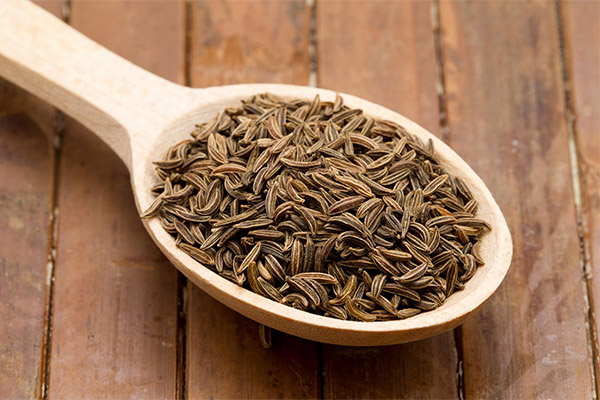
History of the spice
A spice from Central Asia, it has been known since ancient times. Records of zira, or kammun in Arabic, have survived in the scientific works of ancient Greek physicians.
Egyptians used it for curing headaches, colds, and mummifications during burials. The oil from aromatic seeds was believed to accelerate healing of wounds, maintain beauty and youthfulness of the skin.
Zira made its way to Europe in the 9th century from India, where it is still widely cultivated by farmers. The spice was favored by Mediterranean dwellers, while in other European countries caraway seeds are favored.
Where and how it grows
India accounts for most (70%) of the world market supply of the spice.
In addition, the herb is grown on an industrial scale in Morocco, Afghanistan, Iran, Mexico, Syria, Pakistan, Turkey, Tajikistan and Uzbekistan.
In Russia, the zira is cultivated in dachas, vegetable gardens or at home on a windowsill. It is not native to the wild.
How does it look?
The zira plant is a dark green bush up to half a meter high. It has been compared to dill and carrot tops. The leaves of the zira are elongated in length in the form of threads. Its small flowers are red, pink, yellowish or snow-white in umbrella-like inflorescences without a hat because they are arranged in a single plane.
The small seeds grow brown with yellowing and streaked with cumin seeds 3 mm long. The seeds are oblong, ribbed, straight or bent.
Types and Varieties
The genus Cumin in the Umbrella family includes the following species:
- An annual zira with pointed, bitter seeds.
- Borscht's cumin, which grows in arid areas of Central Asia and is not used in cooking.
- Bristly cumin has a pungent odor and a pungent taste.
Two varieties of spice are used to flavor dishes: Zira Kirmana black with a pronounced odor and yellow Persian zira, which is used more often because of its more moderate flavor. Nabatean and Syrian varieties of the spice are not used in cooking.
What it smells like
Its flavor is comparable to that of cumin, but spicier and more pronounced. The smell of the Kirman cumin is characterized as bitter, the Persian as soft, warm, and nutty.
What does it taste like?
In organoleptic property, zira resembles thyme. The seeds have a distinctive, pungent taste with bitterness. When heated, a nutty aftertaste is felt.
What is the difference between zira and cumin?
It was originally mistranslated in Europe to mean that zira and cumin were actually considered to be the same spice. But despite their outward resemblance, they have different tastes and uses. In order to avoid confusion, you should carefully examine the seeds of the spice, smell and taste them. Caraway has a softer flavor, while zira has a bright sour and bitter smell, with hints of nutty notes. In addition, you can visually notice that the cumin seeds are thinner and smaller. The country of origin of each spice is also different. Cumin was shown to the world by India, and the homeland of cumin is Europe.
Composition and calories
The composition of this spice contains essential oil, a large amount of vitamins A and B, in addition, C, K, E, a small amount of gum. The spice is also rich in calcium, iron, magnesium, phosphorus, potassium, sodium and zinc.
100 grams of the product contain only 112 kcal.
Zira (cumin): useful properties

General benefits
- Cumin can serve as a natural antiseptic, analgesic, cleansing agent, preventing blood clots, soothing, toning the body. It prevents the formation of cancer cells, healing lesions on the surface of the skin. The spice also has diuretic, laxative and restorative properties.
- Spice has a beneficial effect on the gastrointestinal tract. It improves appetite, stimulates the digestive system, helps the body to cleanse itself of harmful substances, accumulated slag and toxins. Also zira has a laxative effect, gets rid of cramps and flatulence.
- The seeds of the spice help to improve metabolic processes. Specialists advise to include it in your diet in such a disease as diabetes, as it helps to reduce the glucose level in the blood of the patient.
- As an antiseptic, the properties of the spice are used in the treatment of various infections. They have a diuretic effect, get rid of infections in the urinary system.
- This spice helps to reduce blood pressure, opposes the formation of thrombosis, making the walls of blood vessels more elastic, improves the cardiovascular system.
- The spice has a beneficial effect on the nervous system, has a calming effect, improves brain activity. With the help of cumin cope with symptoms of insomnia, treat nervous disorders, eye disease.
- More often than not, decoctions are made from the seeds of the spice. Such a drink has a positive effect on all systems of the human body as a whole.
For women
Oil from the seeds of zira because of its rich vitamin composition is used by women to improve the structure of hair and skin. It stops and eliminates various inflammatory processes on the skin, helps to restore damaged cells. It is used to treat various fungal infections. It is an effective remedy for acne and the effects of allergies on the skin. It makes the skin firmer and more elastic, increases the protective immunity of the epidermis, cleanses pores and relieves facial swelling.
For men
Tincture of the spice has a beneficial effect on male sexual activity, stimulating sexual function. To make it, you need to take 250 grams of ground into powder zira seeds, 250 grams of ground ginger, 180 grams of anise seeds. Pour all this in 1 liter of 70% pure alcohol. Insist in a sealed container for a week, remembering to turn every day. During the treatment it is necessary to drink 25 ml of tincture up to three times during the day.
When pregnant.
Spice helps to improve the functioning of the gastrointestinal tract, reduces gas formation, helps to remove toxins and harmful substances from the body. Drink from zira - an excellent remedy for manifestations of toxicosis in early pregnancy, which helps to establish a normal sleep.
When breastfeeding
During breastfeeding zira helps to improve lactation, increasing the flow of milk. Take zira powder in half with sugar in equal parts up to three times during the day. You can boil a decoction in water or milk. Take it for a day three times.
For children
Unconcentrated decoction with cumin seeds give a child in case of colic. The spice is allowed to children, but only in small quantities. Before including this spice in the baby's diet, it is necessary to make sure that there are no allergies.
When losing weight
A significant result in the process of weight loss is a scientifically confirmed fact. The specialists have proved the effectiveness of the spice during the experiment, which was attended by 88 female representatives of the fair sex who dreamed to lose weight. Before the experiment began, the girls were divided into several groups. The first group ate yogurt with 3 grams of cumin. The second group consumed the same yogurt, but without the spice. They all had the same diet and the same foods. After three months, after evaluating the results, it turned out that the girls in the group consuming yogurt with zira lost 15% more weight than those in the other group. Specialists say that this happened due to the excellent property of the spice to cleanse the body of toxins, excess food. In addition, the zira helps to increase the rate of fat burning, speeding up the metabolism. In a low-calorie diet, adding a little cumin to the diet, you can achieve the desired results quickly enough.
There are diets that involve adding 10 grams of zinc, as a separate item, to green tea. But you should remember that if you take the spice incorrectly, on the contrary, it will contribute to gaining extra pounds. Therefore, it is not recommended to take more than 10 grams of spice during the day.
The Use of Zira in Traditional Medicine
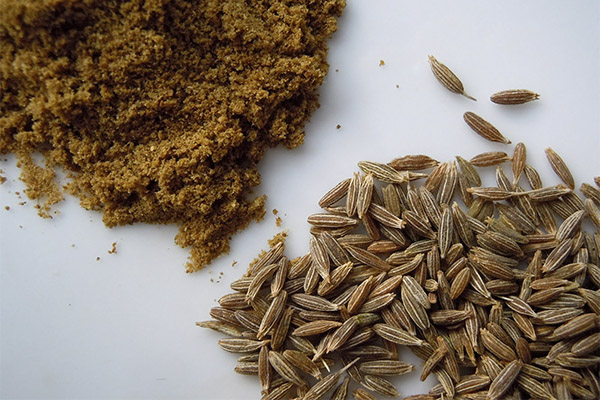
- Decoction from the seeds of the spice is an effective remedy for colds, infections of ENT organs, problems with the urinary system. To prepare this decoction, you need to take 10 grams of spice and pour 250 ml of boiled water. Put the mixture on a water bath and boil until boiling, then simmer for another quarter of an hour. Remove from the heat and allow to stand for about half an hour more. Strain or filter the drink, after which it can be consumed. Drink the drink is recommended three times during the day at 45 ml. This decoction helps to eliminate infectious foci and inflammatory reactions, copes with the symptoms of coughs, helps the body to eliminate toxins.
- When insomnia, memory lapses will help decoction of cumin seeds with milk. To make it, you need to take 250 ml of warm milk, pour into it half a small spoon of cumin. If you do not know what to do, you can do it in the same way. It is recommended to drink the drink before going to bed.
- To improve intestinal peristalsis, cleanse the body of toxins and slags, get rid of the symptoms of dyspepsia, you need to include in your diet decoction. To prepare it, you will need 5 g of zira and 250 ml of cold water. Add cumin to the water and put it on a water bath. Bring the mixture to a boil, then simmer until the water turns black. Remove from the heat, cover tightly and leave to cool. The resulting mixture is strained and divided into three parts. Take three times a day. Means also help to cope with colic and flatulence, improve the digestive system.
- When treating diseases of the kidneys and the urinary system, use a tincture of cumin seeds. Since it has a diuretic effect, it can be used as a means of lowering blood pressure. Prepare this remedy from 10 grams of zira and 250 ml of boiling water. Pour the seeds with boiled hot liquid, leave to infuse for half an hour, then strain and use 3 times a day, pouring the drink in equal parts. This remedy helps to cope with infections, kicking them out of the body, relieve inflammation, lower blood pressure.
- Rapid tissue regeneration, as well as an antiseptic effect is possible with the use of a lotion with zira. They are also used as a means for rapid healing of wounds, eliminating tumors, getting rid of pain in the joints. To prepare a healing drink, you will need 2 tablespoons of anise oil, 5 tablespoons of olive oil, 3 tablespoons of cumin seeds. Mix all the ingredients together, grind the cumin to a powdered state beforehand. Heat the mixture in a water bath to 37 degrees. Soak a bandage or gauze and apply to the sore spot for at least an hour.
Zira in cooking
Roasting the seeds in ghee or vegetable oil and adding them afterwards to baked goods can make them richer and more flavorful. If you stick to a few cooking methods, you can achieve great results.
- Put the pan with the zira seeds on the stove. When they begin to sizzle, put in a hot pan 150 grams of basmati rice, but ordinary rice will do. Mix all ingredients well, season with salt and add about 400 ml of water, put the lid on and cook until soft. This dish is very popular in India, it is called "zira rice".
- Bread or any other pastry can be garnished with zira seeds.
- Oil left over from frying the cumin seeds can be poured over fried or boiled potatoes, which is very tasty and unusual.
- Cooks include the oil-fried seeds in dishes with boiled lentils and beans, seasoned with other spices such as turmeric and salt.
- Zira is also excellent for dressing soups.
- To coat toasts or slices of bread, you can not only traditional products, for example, instead of butter, you should prepare a filling with zira. To make it, you need to fry the cumin seeds in oil until they sizzle, then add them to grated adygeyan cheese, knead and use.
- Roasted cumin seeds give the stewed vegetables a certain piquancy and unusual flavor. To prepare this dish, you need to stew vegetables with this spice, add grated or finely chopped ginger, half a teaspoon of powdered turmeric. Salt and pepper according to taste.
- Adding ground cumin to classic yogurt not only makes for a healthy, but delicious product. And if you also add grated or finely chopped vegetables, roasted peanuts, you get almost national "raita" - a dish that is prepared in India in hot weather.
- Salads are also flavored with roasted cumin.
- If you want to diversify your menu with Indian flavors, simply add zira seeds to cooked spaghetti or pasta.
Salt cakes and pizzas are often flavored with cumin. - Cumin seeds are also used to make tea. Pour 5 grams of seeds with a glass of boiling water and infuse for 20 minutes. Tea is useful for digestive problems, as well as for prevention.
- Grind the seeds in a mortar, because then you can get essential oils from them.
- Grind large amounts of seeds at once for stocks is not recommended, because the spice loses its freshness and rich flavor over time. It is best to grind them right before adding them to food.
Where to add
In Asian and Eastern countries are widely used in the preparation of various dishes zira. The spice is used in powdered and whole form. Before adding cumin, it is always fried in oil, so that the spice further saturates the dish with bright flavors. Be careful when frying, otherwise the cumin can be overcooked. Then it will spoil the dish, giving it a bitter taste and a burning smell.
Cumin is used to season delicacies of meat and other spices for pilaf, stewed vegetables, and legumes. Spice used in the preparation of stuffing and sausage. Zira seeds are added to give marinades and sauces an exotic flavor.
Ground spice is also added to a variety of pastries and dough. Because of this products have a richer and more captivating flavor.
Uzbek chefs season shashlik, lamb kidneys and liver with kumin. European cooks use the spice on dumplings and add it to stuffing or water, soups, and omelets. Mexicans use cura as the main ingredient in their national dish, chili con carne. Greeks put the spice in sausages, sauerkraut, and stews. African peoples use it to make borscht and Maghreb couscous. In the Baltic countries cumin is one of the main spices for making cheese and other dairy products.
However, you should be careful and add it to dishes gradually, tasting it beforehand so as not to spoil it. Spice has a rather specific taste, so it will not please everyone.
How to replace cumin in a recipe
Most often cumin is replaced by cumin, as these spices are not only similar in appearance, but also have a certain taste similarity. But the spice differs in that it has a brighter and richer flavor. Caraway seeds should be added to the dish with half the rate specified in the recipe, and gradually bring to the taste you like.
Another substitute from the parsley family would be coriander. Although it should be added carefully, because the taste will be a little different than with cumin. Because of the addition of coriander, the dish takes on an earthy, lemony flavor. It is also better to start seasoning from half the norm, stated in the recipe.
Zira combines well with chili peppers, so you can often find them as part of mixtures. Replacing it with zira is also possible. The only nuance - the dish will turn a little reddish because of the pepper. You should start adding one third of the recommended amount of cumin, so that the dish will not be very spicy.
An excellent alternative is garam masala, a popular spice blend from India that has a "sizzling" flavor. It already contains a fair amount of zira. It is often added to various dishes during the cold season. The color of the food will not change much from the addition of the mixture.
Cumin is also substituted for curry powder, a popular Indian spice blend. The mixture contains a large amount of zira, with turmeric, coriander, and ginger also added. The dish will have a sweet, earthy flavor with a hint of spice and will be colored yellow.
Cosmetic Uses
From this spice is prepared essential oil, which is used in cosmetology. It helps to eliminate many flaws, for example, daily use can even out skin tone, brighten and moisturize it. A mask based on zira oil strengthens the bulbs and helps to accelerate hair growth. Since essential kumin oil has dermatological and antiseptic effects, you can cope with dandruff with its help. Frequent use reduces inflammatory formations on the skin, copes with itching, eliminates skin rashes. That is why cosmetology companies include zira oil in many of their creams, lotions, ointments, herbal teas.
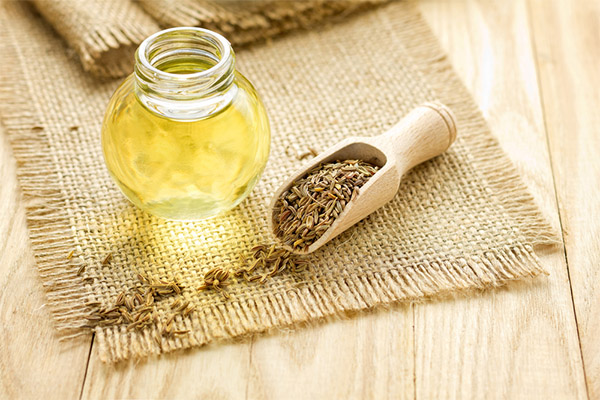
It is an excellent remedy for scalp massage. The nutrients in the essential oil have a beneficial effect on the skin and hair follicles. Spice helps to calm the nervous system, prevents the emergence of diseases on the surface of the skin, fights dandruff. The seeds of the spice contain B vitamins, which have a beneficial effect on the hair, accelerating its growth and making it soft and shiny. In addition, due to the content of limonene, aldehydes, pinet and camphor, it slows down the aging and graying of hair.
Zira oil is used for wraps. But the greatest effect can be obtained not from the oil, but from the ground seeds of zira, turned into a paste. This mixture should be applied to the scalp.
In order to quickly and effectively get rid of dermatosis, the following masks using fiery zira are used in the treatment of the disease.
- You need to take 15 g of clay and 15 g of ground herbs (ubtan), as well as 5 g of oil of fiery zira, 30 ml of purified from impurity, hot water. The mask has a peculiar smell, so you can add any essential oil as a flavoring.
- To prepare the mask you will need 5 grams each of the following: green ground tea, clay, ground oatmeal, ground herbs, oil of fiery zira. After mixing all the ingredients, add 40 ml of hot water, purified from impurities.
These homemade masks should be kept for at least a third of an hour. Depending on how it feels, you can also keep it for up to one hour, for example taking a bath.
Spot application is an effective method for treating the skin. Using cotton swabs, you need to apply the product to the problem areas of the skin a few hours before bedtime. Then wipe your skin with a tonic for daily use. Do not sleep with this product on your face, as you can get things dirty, which can hardly be washed away from the mixture. This procedure allows you to localize the pain syndrome, get rid of itching.
Masks can be used as a massage for the face. In them you should only add one of the following oils to choose from: tea tree, juniper, olive, vetiver and kelp. The mixture is poorly absorbed into the skin, so it will take about an hour to perform the massage. With the help of this procedure you can relieve swelling.
The oil copes well with various inflammatory conditions on the surface of the skin. Applying such masks, you can make the skin supple and elastic, slow its aging. They will help to get rid of acne, normalize the sebum secretion, reduce pores. It is not recommended to use the product in its pure form in cosmetology.
The healing and cosmetic properties of fiery zira oil were discovered more than 3,000 years ago. Egyptian pharaohs used it to treat various diseases. The cosmetic effect of the spice was discovered by the famous queen Nefertiti. Cleopatra loved to take baths with this healing rejuvenating liquid.
- To treat acne, you need to mix together sesame oil and fiery zira oil. The consistency should not turn out very liquid. Another 15 grams of ground wheat should be added. This mask should be applied to problem areas of the skin in the morning and evening. Leave it on your face for at least one third of an hour. At the end of time, wash off the mask with lukewarm clean, preferably boiled water. To increase the effectiveness and accelerate the desired result, you should also take a tea with caraway seeds.
- To get rid of or reduce inflammation on the surface of the skin, you can use the following remedy. To make it, take powdered fire cumin and add to it a little distilled water, obtaining the consistency of a thick sour cream. Apply the mixture to the problem areas. This product will also help the skin become velvety and smooth and restore its natural glow. The epidermis will become more elastic, shiny and regenerate itself. It is best to apply the product on a steamed face. At this point, the pores are open, so the nutrients can penetrate deeper and be absorbed by the body faster.
- To cope with eczema should prepare the following composition. Take 500 ml of apple cider vinegar, 250 g of starch, 250 g of zira seeds and the same amount of olive oil. Add the seeds to the vinegar, then strain the mixture. Bring the liquid to the boil, add the starch and cook until it becomes a thick consistency. Pour in the oil and stir. The product is ready to use. It can be rubbed into the problem areas on the skin at least three times a day.
Harm and contraindications
Everything depends on how and in what quantities this spice is used, with excessive use it causes an allergic reaction. Therefore, you should not use the spice with individual intolerance, high acidity, stomach or duodenal ulcer.
People suffering from diabetes and taking medications should include cumin in their diet with great caution. The spice helps to lower blood sugar levels, hence enhances the action of drugs. As a consequence, hypoglycemia can occur and blood sugar levels can drop sharply.
When using the spice as a medicine, it is necessary to first consult with a specialist.
How to choose and store
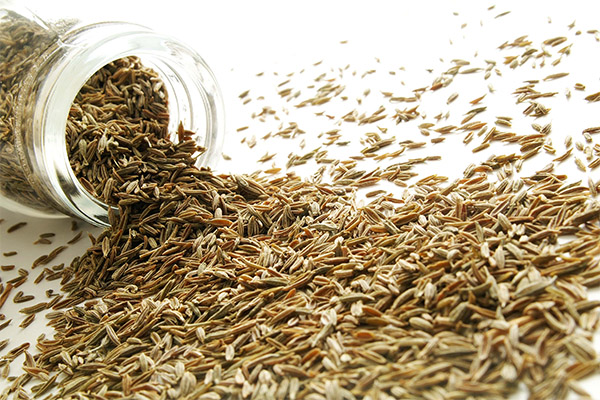
Buying the spice in a package, you should pay special attention to the tightness of the package. When buying the spice in the form of seeds, it is necessary to look at them carefully and make sure that they are intact. They should be free of debris, external damage, have a round shape. They should emit a pleasant, not very pungent smell. It is best to buy the spice in specialized outlets.
Long storage makes the seeds of zira bitter to the taste. Store the spice in a dark place in a glass container, no more than 1 year.
How to roast and grind spice
Unleash the flavor, aroma of the spice by roasting the seeds:
- put the frying pan on the burner on;
- After heating the pan on medium heat, put the cumin;
- fry the seeds, stirring continuously until blackened;
- remove from the frying pan when you feel a bright pleasant aroma.
Grind the seeds by pouring them into a spice mill or grind with a coffee grinder. It is better to make a powder from the seeds just before use, and add it to dishes closer to the end of cooking so that the flavor does not escape.
Growing Zira
A plant native to warm overseas countries is successfully cultivated by gardeners on their plots in the middle belt of Russia and on the windowsill regardless of geographical location.
Seed Preparation
To stimulate rapid germination, further vegetation, the seeds are prepared.
Before sowing the planting material:
- Placed in a cloth bag.
- Immerse for a quarter of an hour in warm water (45°C).
- Soak in room temperature water for a further 5 hours.
- Transfer to a dry cellophane bag, leave for two days for germination.
- After sprouting, the grains are dried to the degree of crumbly.
To zira seeds are not forbidden, the bag is opened a couple of times a day to air for a few minutes.
When you can plant
Seeds are planted under the film in the second decade of April, in the open bed - in May, when the soil warms up to 10-12°C. Zira grows better in areas protected from draughts with long daylight hours. The plant prefers loose fertile soils with a neutral or alkaline reaction, low groundwater.
The bed is prepared from the fall. When recultivating the soil are made organic at the rate of 2 buckets per 1 sq. m. and slaked lime, if the soil is acidic. At 1 sq. m enough 200-500 grams of deoxidizer, depending on the degree of acidity. In the spring before planting loosen the soil, apply phosphorus-potassium fertilizer, remove weeds.
Deepen the seeds, keeping the distance between the moistened wells from 6 to 50 cm, depending on the spread of the shrub, between the rows - 45 cm. It is possible to sow grains in a continuous way, thinning after the formation of the second true leaf. The depth of sowing depends on its size and weather. Large seeds of perennials are sown 2-3 cm. Small seeds of annuals are sown superficially. If a dry summer is expected, the depth of embedding is increased to 3-4 cm.
Sprouts in the greenhouse appear in 12 days, in the open ground two days later. Tender sprouts sprout en masse, develop quickly, little susceptible to disease.
Planting zira by seedling method is not excluded. In this case, take into account that transplanting cumin is painful. To accelerate rooting, young plants are planted in a permanent place with a root ball or in peat cups.
Flowering period
The buds of small flowers zira collected in umbrellas with 6-12 rays, open unfriendly. The fruit also ripen unevenly. Flowering of the spice plant occurs in June and July.
Care after planting
Care for spice plants is not complicated. The soil is moistened as the top layer dries, on average once a week. After each irrigation, the soil is loosened and weeds are removed to prevent the formation of a hard crust. To reduce the moisture content of ripening fruits, stop watering from the beginning of August.
Like other members of the Umbelliferae, rye is affected by fungal diseases, parasitic insects.
Lack of light, dense plantings, low temperatures and high humidity lead to gray rot. The disease is treated initially with iodine and mustard solutions.
Among pests, aphids, nematodes, thrips, and celery fly attack the rye. Insects are repelled by garlic tincture. Preventive measures are recultivation of anthills, loosening the soil, and weed control.
Harvesting
To prevent the seeds from crumbling, zira is harvested after half of the fruits on the central umbrellas have ripened. This is usually at the end of August or early September.
Choose a sunny day for harvesting. The plants are mowed and dried under a canopy or indoors to a moisture content of 12 percent. If the cumin is left in direct sunlight, the taste of the grains will become less bright. Overmoistened seeds are dried in dryers with a 3-5 cm layer.
Store cumin in dry places in airtight containers away from direct sunlight and bright artificial light. Up to two months the spice retains its consumer properties in a closed glass jar on a refrigerator shelf.
Q&A
Cooks who add spicy herbs to dishes, are interested in information about where and for how much you can buy cumin, with what spices it combines and how to flavor a pilaf with cumin seeds.
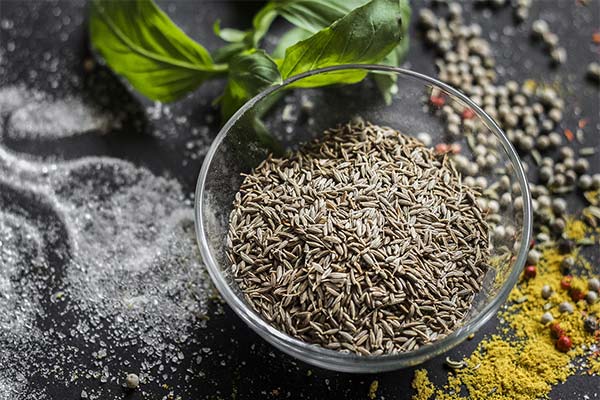
What spices does it go well with?
The inhabitants of South-West Asia and Egypt use together with zira other local spices, coriander, red and black pepper for cooking. When cooking a pilaf dish, in addition to cumin, season it with barberry, cardamom, turmeric.
The spice is successfully combined with oregano, thyme, chili pepper or coriander, chili, and ginger.
Fragrant zira seasoned dishes with saffron, nutmeg, garlic, clove flowers. Cakes are tastier and more savory if the dough is flavored with zira, cumin and coriander. The flavor of sea and river fish reveals the combination of cumin with bay leaf, oregano and paprika.
If there is no zira, it can be replaced with other spices. The most common analogue is cumin. Both spices have a spicy taste, but the first has a nutty aftertaste and the cumin has a citrusy one. The Indian spices that contain cumin are curry, with a spicy-sweet, earthy flavor, and "hot" garam masala.
Where to Buy and How Much
Whole and ground zira can be bought in supermarkets, oriental spice shops or online spice and spice stores at a price of 39-45 rubles for 50 gr.
When to add zira to pilaf
To give the pilaf an oriental flavor, a burnt nutty notes, in the dish add cilantro. It is important to know when to do it, so that the spice is fully disclosed and does not lose its useful properties.
The spice is added together with other spices after roasting meat and vegetables, when the products are poured with water for further stewing.
For pilaf choose whole seeds, not ground. For 1 kg of rice is enough 1-2 tsp. kmina.
Interesting Facts
- In ancient times, it was believed that the bride and groom during the marriage ceremony should have a few seeds of zira. It was believed that this would help the young find a happy united destiny.
- Zira can often be found in such a popular spice as curry, which has many variations of preparation. It is also found in the Armenian spice chaman, where in addition to zira, also added coriander, fenugreek and various peppers.
- In North Africa, this spice is used to make a paste called harissa. In addition to cumin, hot chili peppers, olive oil, fresh garlic, coriander, mint, vinegar, and lemon juice are added.
«Important: All information on this site is provided for informational purposes only For educational purposes only. Consult a health care professional before using any of the recommendations. health care professionals before using any of the recommendations. Neither the editors nor the authors shall be liable for any possible harm caused by materials."

